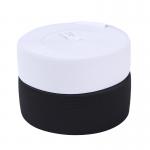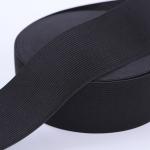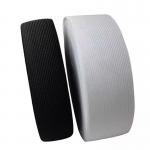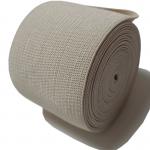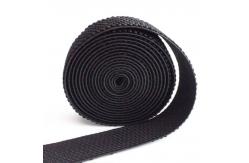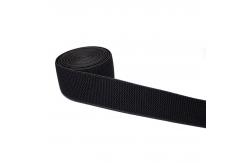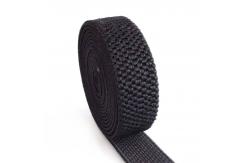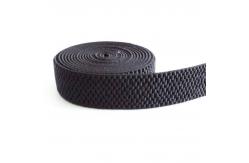Custom Colors Knitted Sublimation Polyester Rubber Elastic Band
Roll For Wristband | | *Brand | LiuFeng | *Color | Black | *Tenchnic | Webbing | *Material Type | Polyester | *Feature | Sustainable | *Width | Support Customization | *Use | Bags, Garment, Home Textile, Shoes | *MOQ | 3000M |
Knitted elastic is a type of elastic material that is produced
using a knitting process. It is characterized by its stretchability
and flexibility. Knitted elastic is commonly used in various
applications where a comfortable and secure fit is required. Its
construction allows it to stretch in multiple directions, providing
a greater range of motion compared to other types of elastic.
Knitted elastic is often found in waistbands, cuffs, sleeves, and
other areas of clothing and accessories. It is also used in medical
garments, sportswear, and other specialized applications. The
specific properties, thickness, and width of knitted elastic can
vary depending on the intended use and manufacturer. The production process of knitted elastic involves several steps.
Here is a general overview of the process: Yarn Selection: The
first step is to select the appropriate yarn for the knitted
elastic. The yarn can be made from various materials such as
cotton, polyester, nylon, or a blend of different fibers. The
choice of yarn depends on the desired properties of the elastic,
such as stretchability, durability, and comfort. Knitting: The
selected yarn is fed into a knitting machine, which is specially
designed for producing elastic fabrics. The knitting machine uses
needles or hooks to form loops and interlock the yarn to create a
knitted structure. The knitting process can be done on a flat
knitting machine or a circular knitting machine, depending on the
desired width and construction of the elastic. Elastic Insertion:
In some cases, an elastic material, such as rubber or spandex, is
inserted into the knitted fabric during the knitting process. This
elastic material provides the stretchability and recovery
properties to the knitted elastic. The elastic material is
typically fed into the knitting machine along with the yarn, and
the machine incorporates it into the fabric structure. Finishing:
Once the knitting process is complete, the knitted elastic fabric
undergoes various finishing treatments. This may include processes
such as dyeing, heat setting, or coating to enhance the appearance,
colorfastness, and durability of the elastic. Finishing treatments
can also help to improve the elasticity and recovery properties of
the fabric. Cutting and Packaging: After the finishing process, the
knitted elastic fabric is cut into the desired widths and lengths.
The elastic may be cut into individual strips or kept in continuous
rolls, depending on the intended application. The cut elastic is
then packaged and prepared for distribution or further
manufacturing processes. It's important to note that the specific
production process for knitted elastic may vary depending on the
manufacturer, equipment used, and the desired characteristics of
the elastic. Additionally, specialized machinery and techniques may
be employed to create specific patterns or designs in the knitted
elastic. |
